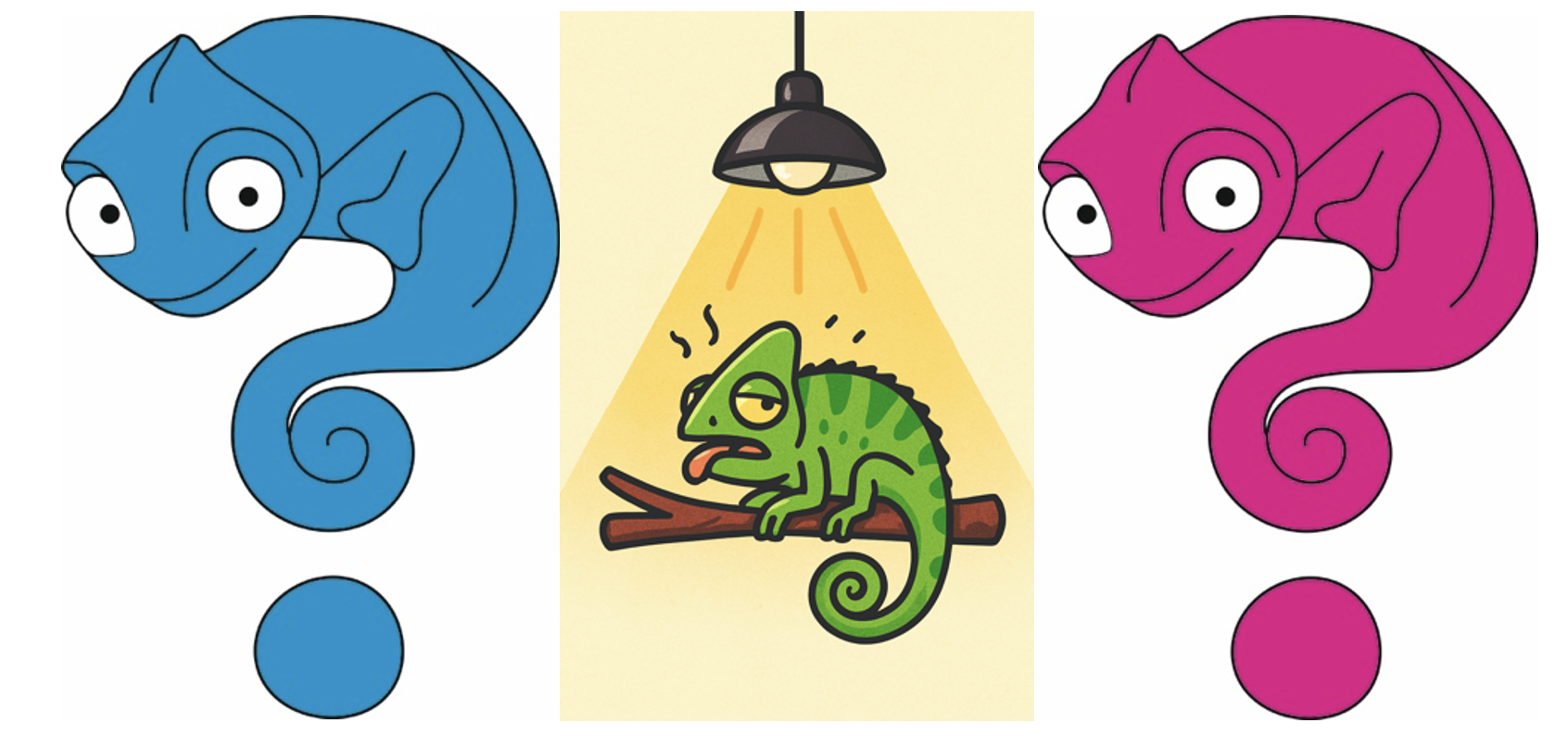Myth 9: “Let the Chameleon Decide” — A Fatal Error in the Matrix

Why the belief that "the chameleon knows best" is dangerously misleading: Trusting the Chameleon to Self-Regulate Will Kill It
Evolution Is Reactive, Not Predictive
Evolution equips animals with traits that help them survive — but only in environments they've actually experienced. It cannot prepare organisms for conditions they've never encountered. It doesn't plan ahead. It responds to what is, not what might be.
For example, a hare in a snowy landscape may evolve white fur for camouflage. But if the environment turns black, that same trait becomes a liability. Nature didn't "prepare" the hare for black terrain — so it becomes exposed and vulnerable.
Chameleons: Programmed for the Wild, Not for Captivity
Montane chameleons evolved in cold, cloudy habitats. Sunshine is rare and brief. Their survival instinct is simple: bask every second possible. That's their hardwired behavior.
In captivity, under 12-hour heat lamps, this instinct becomes lethal. They bask continuously, unable to recognize the danger. They don't stop because they've never needed to. Overheating isn't stupidity — it's evolutionary innocence.
Yemen chameleons suffer similarly. In nature, the sun is 150 million kilometers away. But basking lamps just centimeters from their skin can reach extreme temperatures. Their casques burn — not because they're careless, but because they've never evolved defenses against artificial heat sources.
Overeating: Scarcity Program Meets Abundance
In the wild, food is scarce. Chameleons eat to survive. Their instinct is: "Eat as much as possible." That works in nature — but in captivity, with abundant fatty larvae and caterpillars, it leads to obesity, organ damage, and death.
They don't "choose" to overeat. They're following a survival script written for a different world.
Water: From Droplets to Dangerous Drenching
Wild chameleons rarely encounter flowing water. They hydrate primarily from the water containing bodies of he insect and from the nighttime inhaling of fog. They sometimes lick dew or tiny droplets. Overhydration is impossible — there's simply not enough water.
But in captivity, with streams pouring over their mouths and nostrils, they reflexively swallow and swallow. They overhydrate. And they suffer.
The Fatal Myth of Autoregulation
Chameleons cannot regulate what they've never evolved to face. In captivity, they are at our mercy. We can harm them not only through neglect, but through excess:
Too much heat
Too much food
Too much water
Too much humidity
Too many supplements
Too much UV
Too many plants
Too much of anything
What Must Be Done
Understand their natural habitat in detail
Simulate it carefully and precisely
Monitor their behavior and health continuously
Regulate their conditions — never assume they can do it themselves